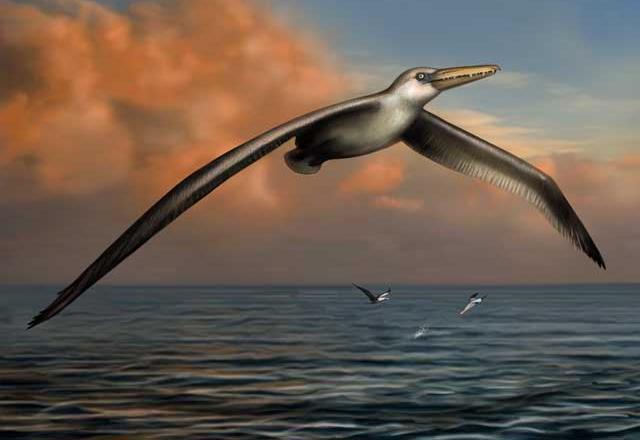You are here
Teeth from ancient megashark found on Australia beach
By AFP - Aug 09,2018 - Last updated at Aug 09,2018

Fossil enthusiast Philip Mullaly holds a giant shark tooth — evidence that a shark nearly twice the size of a great white once stalked Australia’s ancient oceans — at the Melbourne Museum on Thursday (AFP photo by William West)
MELBOURNE — A rare set of teeth from a giant prehistoric megashark twice the size of the great white have been found on an Australian beach by a keen-eyed amateur enthusiast, scientists said on Thursday.
Philip Mullaly was strolling along an area known as a fossil hotspot at Jan Juc, on the country’s famous Great Ocean Road some 100 kilometres from Melbourne, when he made the find.
He told Museums Victoria, and Erich Fitzgerald, senior curator of vertebrate palaeontology, confirmed the seven centimetre-long teeth were from an extinct species of predator known as the great jagged narrow-toothed shark (Carcharocles angustidens).
The shark, which stalked Australia’s oceans around 25 million years ago, feasting on small whales and penguins, could grow more than nine metres long, almost twice the length of today’s great white shark.
“These teeth are of international significance, as they represent one of just three associated groupings of Carcharocles angustidens teeth in the world, and the very first set to ever be discovered in Australia,” Fitzgerald said.
He explained that almost all fossils of sharks worldwide were just single teeth, and it was extremely rare to find multiple associated teeth from the same shark.
This is because sharks, who have the ability to regrow teeth, lose up to a tooth a day and cartilage, the material a shark skeleton is made of, does not readily fossilise.
Fitzgerald led a team of palaeontologists, volunteers and Mullaly on two expeditions earlier this year to excavate the site, collecting more than 40 teeth in total.
Most came from the megashark, but several smaller teeth were also found from the sixgill shark (Hexanchus), which still exists today.
Museums Victoria palaeontologist Tim Ziegler said the sixgill teeth were from several different individuals and would have become dislodged as they scavenged on the carcass of the Carcharocles angustidens after it died.
Related Articles
The wandering albatross, a magnificent seabird that navigates the ocean winds and can glide almost endlessly over the water, boasts the biggest wingspan of any bird alive today, extending almost 3.5 metres.
LIMA — Palaeontologists recently unveiled the fossilised remains of an ancient whale that inhabited the seas 36 million years ago, found las
Infections are usually the main cause of bone loss in teeth; the infection can be in the nerve of the teeth, root,or in the gums. Some patients may suffer from gum infections for several months or years without knowing and if regular check-ups are not being done.This could lead to bone loss in the region of the infected tooth or set of teeth.


















